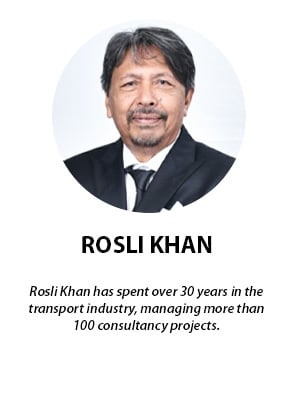
Last Saturday, I was invited to speak at a forum discussing a new highway.
I was lending my support to the residents of Damansara who are protesting the planning of a new urban expressway in the Klang Valley.
At the forum, I took the opportunity to speak on issues surrounding the call to abolish highway tolls, a contentious campaign point raised by Pakatan Harapan in the run-up to the 15th general election last November.
Malaysia must come to a decision, I said.
Do we build more highways and allow private car ownership to grow unabated, or do we focus on constructing more facilities to improve our public transportation system and limit car usage spatially and temporally?
That is a rather complex issue the government must resolve.
Figuratively speaking, Malaysia has arrived not just at crossroads, but at one of those complex “spaghetti junctions” that confront us along our ever-growing highway network.
In which direction should we head?
Build, Operate & Transfer
Some of the highways in the country today, built under the “build, operate and transfer” (or “BOT”) privatisation model with a 30-year concession period, are reaching maturity.
The very first one, which is still the longest highway in the country, has gone beyond its 30-year concession term.
Soundly built and well-operated financially, the highway has not been transferred back to the government.
The concession holder continues to collect toll, with past governments daft enough to allow them to do so.
The concessionaire’s methods of toll collection have been questioned many times over the years, especially because it utilises a monopolistic single card payment system.
The government’s recent announcement that it was considering improvements to the payment system suggests that toll collection will continue for years to come.
Any hopes Malaysians had of driving along toll-free highways may have to be put on hold for some time yet.
New conditions
At the forum, I floated an alternative idea. I suggested that toll collections can continue subject to certain conditions.
First and foremost, the government must ensure that once a concession expires, concessionaires no longer get to retain toll collections for themselves.
Instead, tolls collected must be used for specific purposes only.
Firstly, to pay for the maintenance of the expressway.
Next, to pay for the construction of more public transport infrastructure and facilities, such as, a bus rapid transit (BRT) system, dedicated bus lanes, bus terminals, park and ride facilities for the LRT, MRT and KTM services, coach and taxi revolving funds, safer cycling lanes and pedestrian pavements, as well as drivers’ training.
The government must also give a firm commitment that it will not build new highways in the Klang Valley.
That last condition is obviously the most contentious one, but even the educated and well-to-do forum participants from Damansara, who came in their own private cars, understood the motives and objectives behind the conditions.
Decreasing car use
How can the Klang Valley ever succeed in reducing its car use if new highways continue to be approved and built?
New urban highways will not solve traffic congestion problems. In fact, it will induce more demand for car ownership and usage.
The only solution to the traffic congestion problem is to limit excessive car use in the urban environment.
Car commuters will only switch to public transport when the authorities make it costlier to own and use cars, cut out fuel subsidies and increase road taxes, tolls and parking charges.
These are among the more effective mechanisms which have been successfully implemented in many European countries, but have not been fully exploited by the authorities here.
A floor speaker supported my narrative by using a common buzzword, “sustainable” city. Others chimed in to speak about “reducing carbon emissions”, maintaining a “low carbon city” and introducing a “smart city” concept.
All in all, there was a fair bit of support for my proposal.
Even affluent multi-car owners are buying in to the idea of reducing traffic congestion by increasing mobility via improvements to public transport.
That may well spell doom for the proposed new highway.
The government must sit up and listen.
After all, a developed nation is not measured by how many poor citizens can afford cars, but by how many rich people are willing to use public transport. - FMT
The views expressed are those of the writer and do not necessarily reflect those of MMKtT.


No comments:
Post a Comment
Note: Only a member of this blog may post a comment.